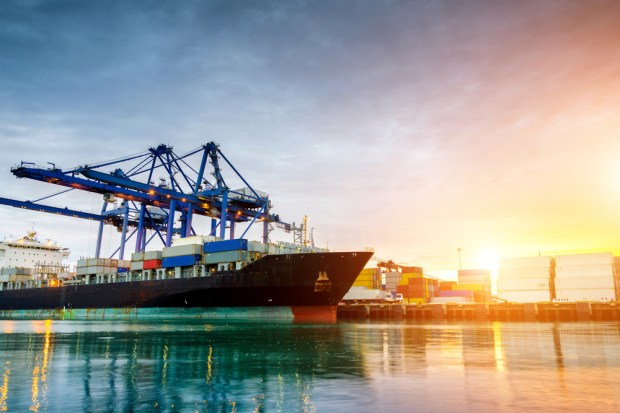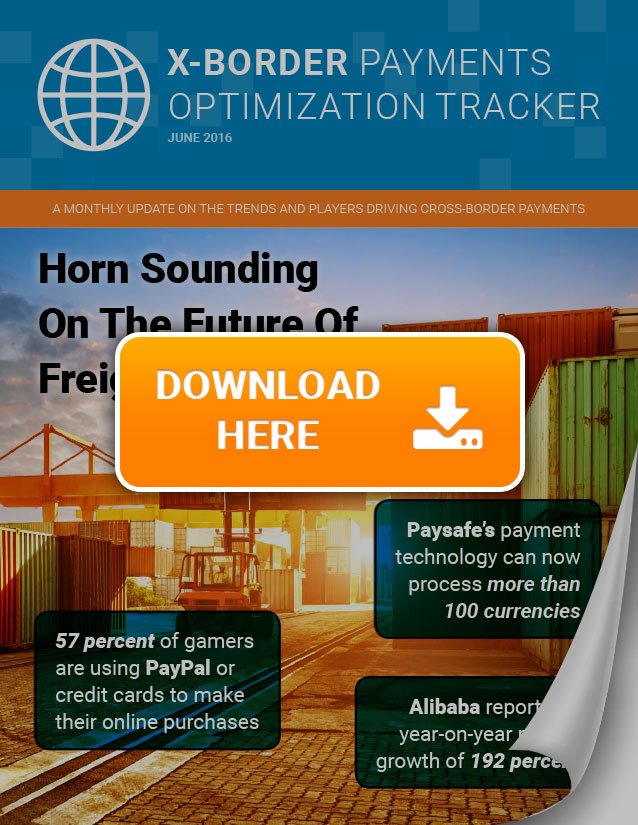Horn Sounding On The Future Of Freight Delivery

Today, thanks to convenient technological advancements, a vast number of merchants – from mom-and-pop shops to traveling retailers – are increasingly able to accept payments via mobile solutions. Even lemonade stands can take credit cards if they’re equipped with a smartphone or tablet.
It may come as a surprise, then, that the freight shipping process involved in transporting many merchants’ products has traditionally lagged behind in technological adoption.
Andrew Fine, CFO of Freightos, which provides a sales automation platform for clients in the freight services sector, explained that cross-border B2B trade has yet to complete the transition from paper to digital.
“The industry is very, very old-fashioned – we’ve been getting paid by paper checks by some of our app customers – this is how outdated the industry is,” he said. “Every shipment has to have physical documents shipped with the shipment or FedExed over before the shipment gets there, it’s actual paper that’s still involved here.”
With Freightos, Fine is attempting to change all this. The software-as-a-service platform is an intermediary solution where international importers and exporters can organize contracts and manage/automate quotes and sales, all from their own web pages. According to Fine, the technology is bringing a “paradigm shift” to the shipping industry.
“It’s bringing freight forwarding online,” he explained.
PYMNTS recently caught up with Fine to take a closer look at what’s happening in the world of cross-border shipping and to discuss the digital future of international trade.
Breaking down the barriers of cross-border shipping
Even the simplest cross-border transactions present numerous challenges on both sides. When just one item is purchased from an international consumer, a slew of factors – from taxes to shifting currency rates – affect the payment process, as well as the price.
The freight industry deals with this concept on a much larger scale (according to Fine, around a trillion dollars is spent each year on international shipping). The sector’s financial magnitude, paired with its constantly fluctuating nature, creates what Fine calls a “fragmented market.”
“The difficult thing is that rates for quoting freight shipments are “ very, very complex,” he said. “It’s not like Amazon – where you have a price of a book or a CD or a watch or anything else – or any other marketplace. With any shipping request there are potentially six, seven or eight different prices to get the quote out to a customer.”
Add paper checks into the mix, and the industry’s complexity only intensifies. For Fine, a way to consolidate this intricate and largely antiquated process in a streamlined digital format seemed like the freight industry’s missing puzzle piece.
Enter Freightos, which offers shippers a virtual home base for their freighting needs.
“We had to build a platform that took rates – which are structured differently with every single freight forwarder – to develop a unified format which was being kind of adopted throughout the industry on our side of it, having to create and upload it into a system, so that when a shipper, let’s say, is able to request the shipment quote, and we have the unified format to actually pull in quotes from all the different freight forwarders on the marketplace,” he explained.
Currently, Freightos is part of a technological evolution taking place in the world of cross-border trade, as it’s helping fill financial shipping gaps with digital services. The solution has proved particularly useful among smaller companies, most of which don’t have the resources to forge personal relationships with banks. These connections are useful, if not necessary, in the cross-border shipping game, as even the smallest shippers require some degree of personal attention from their financial institutions.
“[Big-name players] probably don’t have that much of an issue, but for smaller companies who need the level of service only afforded to companies with a hundred billion dollars in turnover, it’s very challenging,” Fine said.
Global challenges and the future of freight
While widespread international trade offers numerous benefits to consumers, merchants and local economies, being a truly international company presents many challenges. Although Freightos has leveraged technology to help simplify worldwide trade, its status as a global company means that obstacles are omnipresent.
“It’s incredibly complex being cross-border, and by definition of freight is cross-border. The freight industry as an industry is very, very regimented. The process is very, very clear. The financial process behind that when building a marketplace does not exist,” Fine said.
Since banking guidelines vary immensely from country to country, Fine explained that expanding to provide services across the globe is easier said than done. For example, he cited Chinese banking regulations as extremely strict, and that they differ greatly from those in the U.S. and other Western nations. When a company is focused on enabling streamlined cross-border trade, however, creating international solutions that transcend varying banking structures is essential, he said.
“Being a global company as a startup is very, very challenging. Identifying where you save money – but by definition also spend money – and have the infrastructure established is what’s challenging,” Fine said.
In addition to discrepancies in global banking regulations, Fine also cites a lack of international real-time banking as a key operational struggle.
“There are massive gaps between making payments and actually receiving funds. They can’t just have some kind of setup where I can get identified, any solution out there, that can collect funds from anywhere in the world, in a very efficient manner, and make a single payout to a single recipient,” he said. “In lieu of having platforms that do that, we’re going to have to build our own platform… But having to build my own structure around a banking structure and having global reach and having local abilities to receive funds so I’m not paying massive cross-border transaction fees on incoming funds, it can be very challenging.”
Currently, Fine and his team are drawing inspiration from Amazon, which has expanded its services significantly since it became an eCommerce giant.
Taking a page from Amazon’s book
“Amazon’s game all along has been to identify areas of local integration and just nail it. Thinking about deliveries, they’ve actually become a freight forwarder that’s actually providing deliveries. Not just the ‘buy and sell,’ but they’re also going to make the deliveries.”
According to Fine, he learns from the way Amazon is “not just providing freight, but providing everything related to freight, going beyond that and providing financing relating to freight.”
Down the line, Fine hopes that a global payment platform will be developed to simplify the many moving pieces of cross-border trade without charging exorbitant fees. He noted that this platform will likely emerge from partnerships between financial and freight companies, as both sectors are crucial to increasing cross-border efficiency.
“Can we do it on our own? Probably not. Can we find partners or will banking structures sprout up that help actually facilitate this? I’d like to think so, yeah,” he said.
……………..
To download the June edition of the PYMNTS X-Border Payments Optimization Tracker™, click the button below.
About The Tracker
The PYMNTS X-Border Payments Optimization Tracker™ provides an organizing framework for evaluating the many players that help merchants optimize their cross-border clients effectively and efficiently.

